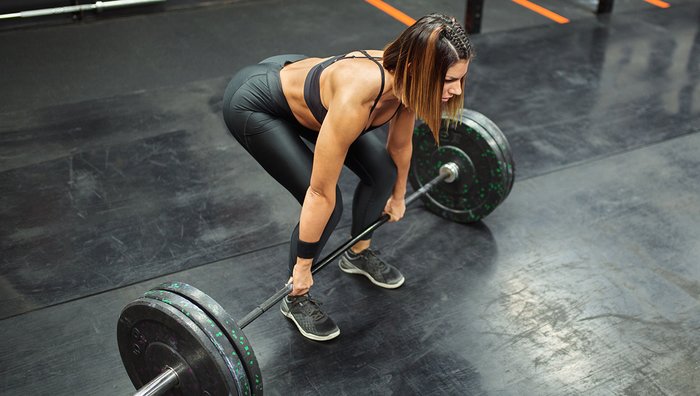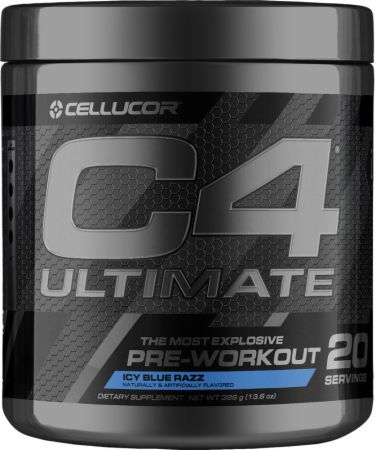We're often led to believe that if something is good, a lot more of it will be that much better. Nowhere is this mindset more prevalent than in the world of fitness, especially when you consider the popularity of things like the #NoDaysOff movement.
For proof of the lengths to which we will go to show how hardcore we are, spend 30-60 seconds scrolling through your Instagram feed and see how many posts are touting "epic" workouts lasting hours on end. The problem with that thinking is that the length of a workout is not the sole indication of its effectiveness. In other words, just because a workout lasts two-plus hours doesn't inherently make it superior to a 30-minute workout.
Does workout length matter? How long do you need to train each session to see results? The answers may surprise you.
How Long Should You Work Out?
Unfortunately, there's no one-size-fits-all answer to this question. Your ideal workout length, as well as how frequently you should train, will depend on a number of factors, including the following:
- Training experience
- Goals
- Age
- Time available for training
- Training approach; for example, straight sets vs supersets, whole-body vs body-part split, upper/lower vs bro split, and the intensity techniques you use
- Rest time between sets
- Amount of workout time wasted; for example, snapping selfies, checking social media, and texting
- How crowded the gym is
Basically, there are simply too many factors involved to give a blanket recommendation. That goes for training programs in general. Not every program (or even every exercise) is right for every lifter.
Furthermore, the length of time you work out reflects the quality of your training. For example, two lifters take two hours to complete a workout. Lifter A is an elite powerlifter whose training typically involves heavy triples. As such, he requires long rest periods in order to regain his strength ahead of the next working set. If you've ever trained with heavy loads on the deadlift near your 1 RM, you know it can take up to 5-10 minutes to recover fully and feel ready to attempt another heavy triple.

On the other side is Lifter B. He's your average joe who hits the gym 3-4 times per week just to get fit. He also takes 5-10-minute breaks in between sets, talking all the while to his buddies; mindlessly repping out set after set of curls, but not pushing anywhere near his max.
While this is a tremendous exaggeration, it makes a point. Just because you're in the gym for a long time doesn't mean you're training hard or that you're training effectively, let alone efficiently.
The truth is, you should be less concerned with the length of time your workout takes than you are with using that time to work hard and improve from the last workout. That means adding weight to the bar, increasing the number of repetitions, or decreasing the amount of rest you take between sets, to name a few approaches.
The time to be concerned about the length of your workout is when you have a severe time crunch. In that case, you need to maximize every second you're in the gym, a situation that calls for techniques like supersets, brief rest periods, and/or circuit training.
Does that mean you can take as long as you'd like to work out, provided you have the time? Of course not.
Everything has an upper limit, and just because you have three hours to train doesn't mean you should take that long. The main goal when lifting weights is to stimulate (not annihilate) the muscles so they have a reason to adapt and grow bigger and stronger. That's it.
Use the rest of your time to recover, relax, work, and spend time with family and friends.

What About Cortisol Levels and Long Workouts?
If you've ever been told that working out for longer than 60 minutes is detrimental to your results, you've been misinformed. Research has shown that short, intense workouts can increase cortisol levels just as much as (and potentially greater than) longer workouts.[1,2]
It's not as if your body suddenly realizes you've been training longer than 45-60 minutes and magically floods your system with cortisol, eating up all of your precious muscle. The body simply doesn't work that way.

The Bottom Line on Workout Length
Notwithstanding the factors affecting your individual circumstances, training experience, and goals, here are some general pointers regarding workout length and frequency:
- If you want to build muscle and improve body composition, lift heavy weights 3-4 times per week totaling 5-6 hours.
- If you want to burn unwanted body fat, add an additional 1-2 hours of cardio to your resistance training. Remember, fat loss and muscle gain are ultimately determined by your nutrition. Calories burned from exercise make up a very small fraction of your total energy output each day.
- Take at least one complete rest day per week to support recovery and reduce your chance of experiencing burnout from the gym.
As with most things in life, the answer to the question of how long or how frequently you should work out is: It depends. While it's easy to get mired in the minutiae of programming and succumb to paralysis in search of the optimal program for making gains, as long as you're hitting the weights 3-5 times per week with a focus on heavy, compound lifts, training every muscle group, and employing the rules of progressive overload, you will build muscle and get the body you've always wanted.
References
- Kraemer, W. J., Fleck, S. J, Dziados, J. E., Harman, E. A., Marchitelli, L. J., Gordon, S. E., Mello, R., Frykman, P. N., Koziris, L. P., & Triplett, N. T. (1993). Changes in hormonal concentrations after different heavy-resistance exercise protocols in women. Journal of Applied Physiology, 75, 594-604.
- Kraemer, W. J, Dziados, J. E., Harman, E. A., Marchitelli, L. J., Gordon, S. E., Mello, R., Frykman, P. N., Koziris, L. P., & Triplett, N. T. (1993). Effects of different heavy-resistance exercise protocols on plasma beta-endorphin concentrations. Journal of Applied Physiology, 74, 450-9.

